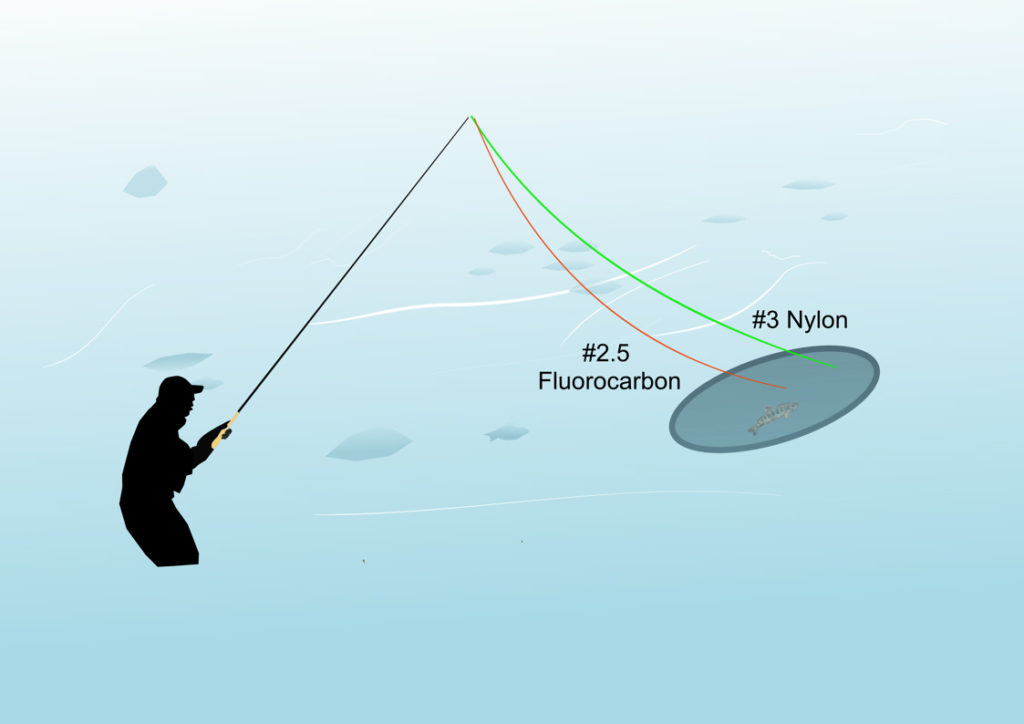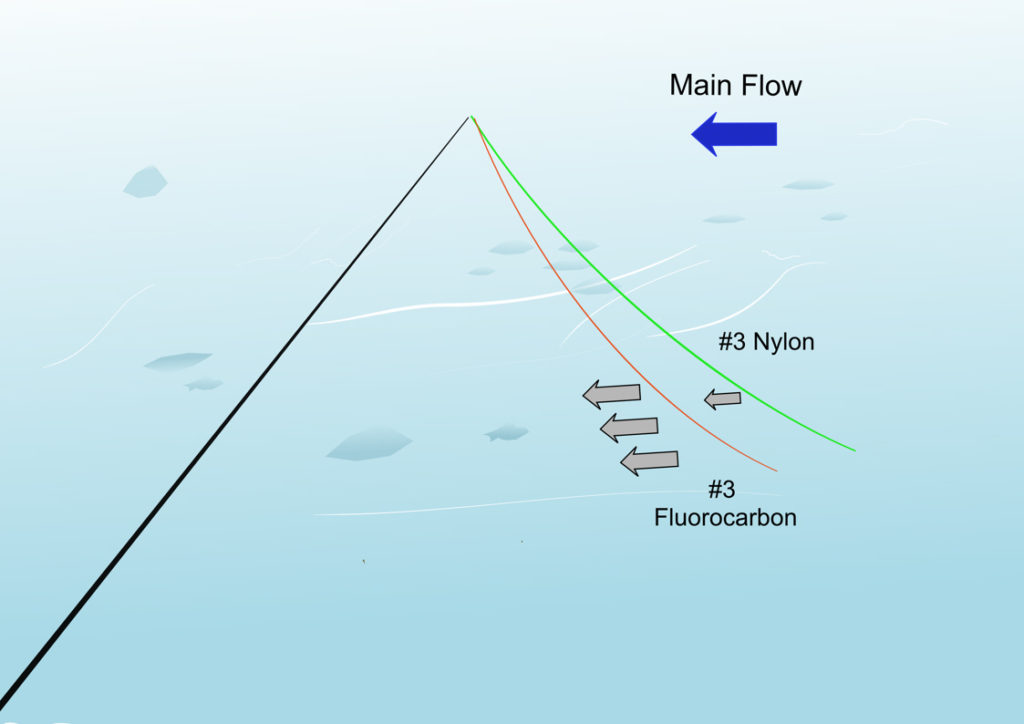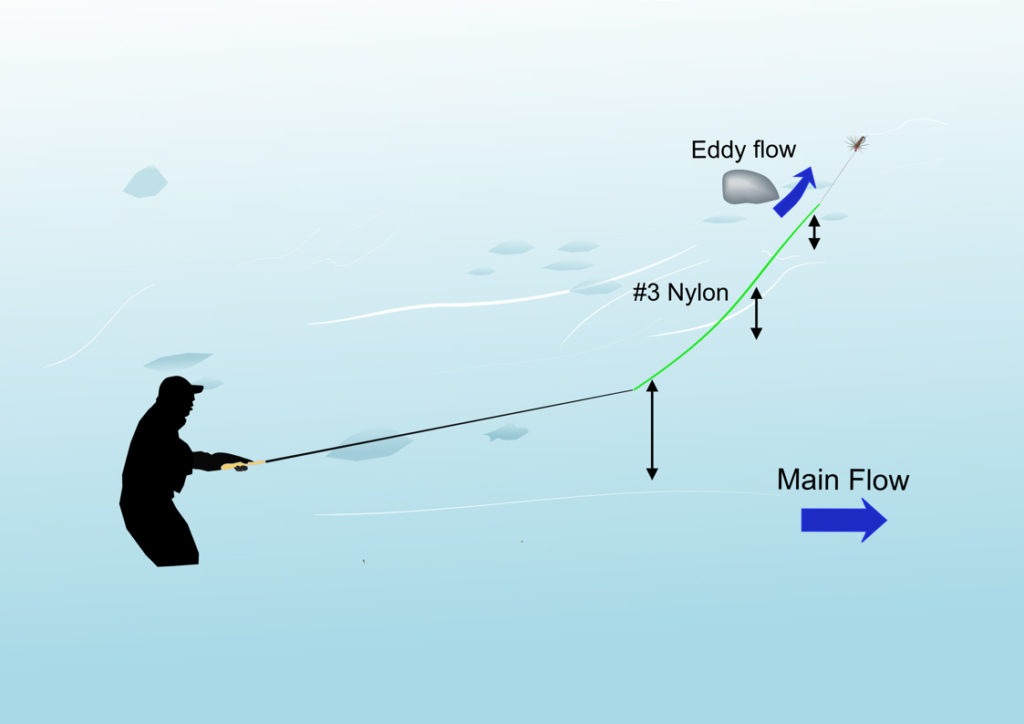After reading Part 3 “What is the Best Tenkara Line?” you’re probably expecting me to try and sell you the idea that ultralight level nylon line is THE MUST HAVE THING FOR YOUR TENKARA RIGHT NOW? Well, here’s the truth; you should probably stay well away from it. Oh I know it might sound like the “magic nylon juju” hypnotises entire shoals of fish to instantly throw themselves into your net – but here’s a short, sharp reality check.
- It is a pig to cast unless your technique is flawless
- It doesn’t work at all well in a wind
- A lot of rods won’t cast it worth a damn once it gets a metre or two longer than the rod
- You should probably forget about it
What it is amazingly useful for is diagnosing casting faults (like the timing of your power application) and we often use it for that when coaching…But constantly struggling with it and having your flaws pointed out all the time quickly gets a bit too much like living with someone who constantly criticizes you. No fun at all.
You get the picture. If you want to get the benefits from that line, you’ll more than likely need to put in some work with the casting practice. It takes some effort and patience– and most folks really avoid that when it comes to fishing.
If you are still reading this far, it probably means you are made of sterner stuff though. In fact, you’re much more likely to be a great angler than the folks that already bailed out on this article. So, High 5, I don’t care (at all) where you are on the skills curve, but I’m always more interested in folks that like to move along that curve a little bit. If you’re also curious about the exact line itself, you can check it out by Clicking Here.
Here’s why I know you’ll get better by reading this whole thing…it doesn’t only rely on my little cartoon drawings and opinionated ranting. Nope. You also get to sit down with the man who did pretty much all of the development of the use of these lines on some of the most difficult rivers and fish in Japan/the world. Now, I’m not for one second suggesting that there aren’t hundreds of people out there trying out nylon for tenkara lines…It is just that, by mathematical certainty, most of those are not elite tenkaristas (is that a word?).
You have to know How, Why and by How Much your method is better than any alternative (under the conditions you face at a given time).
That’s what makes all of the development done by Kazuo Kurahashi (Kura-san) and friends so valuable to us all. Between them, they’ve taken their skills and understanding to a very high level – and it shows time and time again in their results on stream.
To really give you a great chance of getting the most out of Kura-san’s video explanation (below), I’ve put together some examples to get you warmed up…
Firstly, just like you saw in Part 1 of these expert guides, there is an (unsurprising) reduction in Drape Otsuri that we talked about in that first lesson. This is noticeable even compared to pretty light fluorocarbon level lines (say a #2.5 on the Japanese scale). By itself that means you’ll be in a bit better “contact” for the hook-set compared to a line that has a more pronounced curve or “hinge”. In other words, what you do with the rod tip has a more direct effect on the hook point because there is less slack and less “hinging” to overcome.

That reduced Otsuri has some pretty funky effects that, although fairly small, can add up to produce big differences in results over time. So one thing that can make a big difference on very picky fish is the ability of a lighter line to give you a dead drift that is closer to the pace of the river when you are casting upstream…
With slightly heavier lines, it may be that your kebari (fly) is pulled back downstream towards you a fraction faster than the current as the weight of the line makes it “want” to hang straight down from the rod tip. The lightness of the #3 nylon means that it is in less of a hurry to hang down – and so it doesn’t pull the fly as quickly along with the current.
The grey arrows in the diagram show the speed of the downstream progress of each line: The more and bigger the arrows – the faster the line is moving.

Now for a quick warning…You don’t often need or want to be as extreme as the diagram below. But, the ability of a stiff-hackled wet fly to lock into any current that is moving away from the angler can really be increased when the casting line is ultralight level nylon…Providing you can cast it accurately into that current feature in the first place. It is genuinely amazing to be able, in the right conditions, to hold a fly static in the current with a really quite low rod tip – and STILL have all your casting line and most of your tippet held off the water. Even without the low rod-tip, a lighter casting line lets you take advantage of more gentle and subtle currents than you can with a heavier casting line.

OK, I think that should give you enough of a head start – so let’s get right into our privileged tour behind the scenes with Kura-san (courtesy of Go Ishii’s video interview he shot in Japan just three weeks before I wrote this article). You lucky people…
Cool right? A genuine look behind the curtain (and it goes to show yet again that these small, simple details add up to big differences in results)
Obviously if you aren’t already subscribed to our YouTube Channel – we’ll continue to fill it with unique features direct from the source like this – so go ahead and click the subscribe button (and then click the notifications “bell” symbol) below any of our YouTube Episodes. That way, you’ll know the next time we put up a new video or even a YouTube Livestream.
Paul
PS – Did you learn or like this video and the illustrated tactics? If so your friends may or may not deserve to know about it too (but it would be unkind to keep them in the dark!) – So please feel free to share on social media and help spread the tenkara knowledge…
